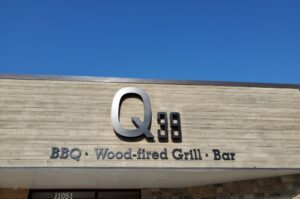The Truman Sports Complex: Wasted Space Or Potential Goldmine?
Recently, an online debate has emerged concerning the ample parking areas at the visually imposing Truman Sports Complex in Kansas City. Initially sparked on the social media platform X, an intriguing conversation developed over the comparison of the sports complex’s vast parking lots with the densely populated Lower Manhattan.
An Unusual Comparison Incites Discussion
The discussion was ignited after an image was circulated that superimposed the Truman Sports Complex parking lots onto Lower Manhattan. Startlingly, the extent of the parking areas nearly covered most parts of Lower Manhattan. The contrast in the two styles of land-usage set off a not-so-uncommon debate between proponents of extensive car usage and sprawling suburbs, and those advocating for compact city living, reliant on public transportation and pedestrian mobility.
A Venue for Development?
The online debate included a variety of development suggestions for the under-utilized space—transforming a fraction of the parking lots into apartments, setting up a hotel, and a pavilion for pitmasters and food trucks during game days. However, a glance at the existing businesses around the sports complex raises questions about the viability of such projects.
Previous Ventures and the Question of Success
The neighborhood around the Truman Sports Complex, over the last 50 years, has seen the establishment of a few hotels, gas stations, and restaurants. However, their lack of survival and growth indicates the challenges of business sustainability in the area. Beyond game days for the Royals and Chiefs, the area apparently lacks the diverse footfall that can sustain a range of businesses.
Is Redevelopment the Answer?
Despite the recent rejection by Jackson County voters towards any proposal for a new Royal’s ballpark or revamping the Truman Sports Complex, it’s crucial to examine the idea of redeveloping the space. If an inventive redevelopment—ensuring the continuance of both teams’ stadia, constructing permanent tailgating infrastructures, along with a carefully curated mix of hotels, restaurants, and housing—were proposed, this might turn the odds in favor of rejuvenation.
Feasibility of Redevelopment
Yet, the practicality of the redevelopment remains questionable. As evidence in the area’s lack of development, there is no guarantee that such a large-scale venture would prove profitable. Moreover, neither the Royals nor the Chiefs’ owners appear satisfied with their current arrangement. Both teams—with respective visions for their fans’ experience—might prefer a single entity ownership rather than a shared complex.
In Conclusion
It’s essential to weigh the benefits and drawbacks before committing to any major reconstruction. With a careful analysis of stakeholder interests and a realistic understanding of the area’s real-life business dynamics, a potential redevelopment of the Truman Sports Complex could create a vibrant mixed-use hub. Conversely, the continuation of the status quo seems to underline the sentiment that this vast expanse of asphalt is too valuable as open space to fold under commercial pressure.







